This article was co-authored by Laura Marusinec, MD. Dr. Marusinec is a board certified Pediatrician at the Children's Hospital of Wisconsin, where she is on the Clinical Practice Council. She received her M.D. from the Medical College of Wisconsin School of Medicine in 1995 and completed her residency at the Medical College of Wisconsin in Pediatrics in 1998. She is a member of the American Medical Writers Association and the Society for Pediatric Urgent Care.
There are 8 references cited in this article, which can be found at the bottom of the page.
wikiHow marks an article as reader-approved once it receives enough positive feedback. In this case, 90% of readers who voted found the article helpful, earning it our reader-approved status.
This article has been viewed 187,762 times.
The mumps is a viral infection that is commonly spread through the saliva of infected individuals. Unfortunately, there is no effective treatment for the mumps and it may lead to serious health complications. While there is no effective treatment for the mumps, being vaccinated can create an effective immunity against the virus.
Steps
Identifying Symptoms
-
1Check for swollen cheeks. The best known symptom of a mumps infection is also often the last to present itself. The mumps virus affects the salivary glands in the mouth, which makes them swell and creates the appearance of swollen cheeks.[1]
- The mumps virus will cause the cheeks to look swollen or puffy and feel warm to the touch.
- Mumps is actually named as such because “mumps” was the term used to describe the puffy lumps or bumps in the cheeks.
-
2Look for flu like symptoms. The mumps virus might seem like a the common cold or a mild case of the flu when you first start to experience symptoms. In this early stage of infection, the only way you may be able to determine that your symptoms indicate the mumps is if you know you have been exposed to the virus recently. Common symptoms include:[2]
- Fever and headache
- Weakness, muscle aches and fatigue
- Pain in the throat while chewing or swallowing and a loss of appetite
- Swollen, painful testicles in adolescent boys, or swollen ovaries in adolescent girls, which can cause abdominal pain.[3]
Advertisement -
3Pay attention to the timeline of your symptoms. The mumps virus can be nearly impossible to diagnose until symptoms present themselves. Unfortunately, symptoms of the mumps virus can take weeks to become apparent, and tend to be rather minor early on.[4]
- Symptoms of the mumps virus usually do not present themselves until two to three weeks after exposure to the virus.
- Symptoms may seem rather mild and are often misidentified as the flu or even just the common cold.
-
4Seek medical treatment if you suspect you have the mumps. Schedule a doctor's appointment immediately if you exhibit these symptoms or if you have reason to believe someone you interacted with had the mumps. Most people get vaccinated to prevent the mumps, but if you are unsure if you you received the vaccine as a child, see a doctor to be sure.[5]
- There are other illnesses such as inflamed tonsils, another viral or bacterial infection, or blockage of the salivary glands that could produce similar symptoms. See a doctor if you have any reason to suspect that you have the mumps.
- Let your doctor know about your concerns before you arrive at the doctor’s office to avoid long waits where you could possibly infect others.
Preventing and Treating Infection
-
1Get vaccinated against the mumps. The mumps virus is no longer particularly prevalent today because most people are vaccinated as children. The mumps vaccination is usually combined with the vaccinations for measles and rubella, in the MMR vaccine. People who receive the vaccine are commonly considered to be immune to the virus.[6]
- The vaccine is usually provided to children in two doses: one between twelve and fifteen months in age, and another at either age four to six or eleven to twelve.
- Adults that have not been vaccinated should also receive the vaccine in two doses. A single dose does not seem to provide sufficient protection against the virus.
-
2Avoid contact with the saliva of infected people. The mumps is most commonly transmitted from person to person through infected saliva. It's important to avoid the saliva of anyone infected with the mumps virus.[7]
- The mumps can be transmitted through the air via tiny droplets of saliva released through coughing or sneezing.
- Do not drink from the glass of anyone you suspect to be infected with the mumps virus.
-
3Get tested for the mumps virus. If your doctor suspects that you have the mumps virus, a blood test is often conducted to confirm the diagnosis. Being tested for the mumps virus is the only way to know for certain that you have been infected.[8]
- The blood test confirms a mumps infection by identifying the antibodies the human body produces to combat the mumps.
- An oral swab is usually also taken to confirm the presence of the mumps virus.
-
4Be aware of possible complications. In the absence of complications, the mumps virus can offer a fairly easy recovery. Unfortunately, a number of additional medical issues can be caused by or exacerbated by the presence of the mumps virus. These complications are rare, but can be extremely serious.[9]
- Inflammation of the testicles, breasts, ovaries, pancreas and parts of the brain can lead to significant health issues and even death.
- The mumps virus can cause hearing loss in some people.
- The mumps virus can possibly cause miscarriages in pregnant women.
-
5Receive treatment for the mumps virus. Unfortunately, because the mumps is a viral infection, antibiotics cannot help fight off the mumps virus. However, there are several effective treatments while the person with the mumps is symptomatic, including rest, hydration, fever or pain control, and time.[10]
- You can apply warm or cold compresses to the cheeks to help with the pain and swelling. You should also eat more soft foods and avoid sour foods.
- People are no longer contagious a week after a verified mumps virus test.
- People often recover within two weeks of a positive mumps test provided there are no additional complications.
References
- ↑ https://www.nhs.uk/conditions/mumps/
- ↑ https://my.clevelandclinic.org/health/diseases/15007-mumps
- ↑ http://kidshealth.org/en/parents/mumps.html#
- ↑ https://www.betterhealth.vic.gov.au/health/conditionsandtreatments/mumps
- ↑ https://www.nhs.uk/conditions/mumps/
- ↑ http://www.cdc.gov/mumps/about/transmission.html
- ↑ https://my.clevelandclinic.org/health/diseases/15007-mumps
- ↑ http://www.cdc.gov/mumps/lab/qa-lab-test-infect.html
- ↑ https://www.betterhealth.vic.gov.au/health/conditionsandtreatments/mumps
About This Article
To recognize the symptoms of a mumps infection, check for swollen cheeks, since the virus affects the salivary glands in the mouth. Additionally, look for flu-like symptoms, including fevers, headaches, muscle aches, fatigue, and a sore throat. While your symptoms may be fairly minor at the beginning, they'll likely get worse 2 to 3 weeks later. If you suspect you have the mumps, see your doctor immediately for a blood test to confirm the diagnosis. After your appointment, treat your symptoms with rest, hydration, and over-the-counter pain relievers. For more tips from our Medical co-author, including how to keep yourself from getting the mumps, keep reading!
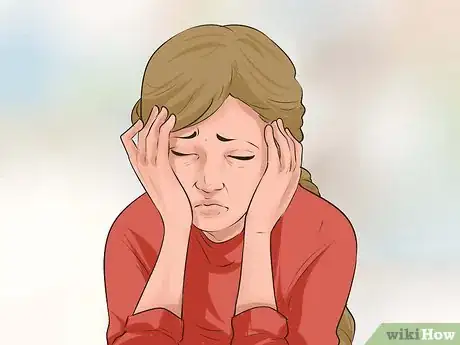
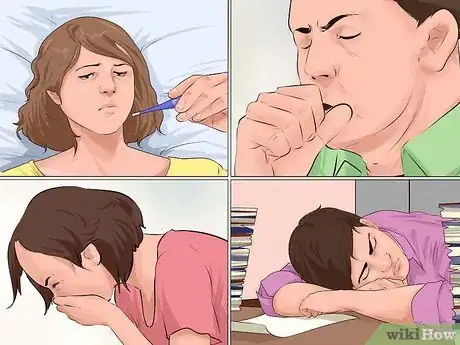
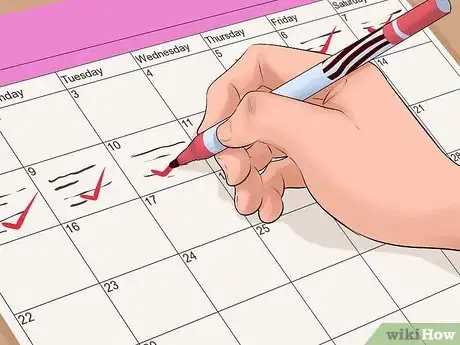

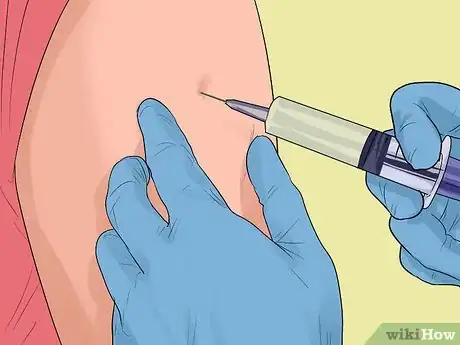


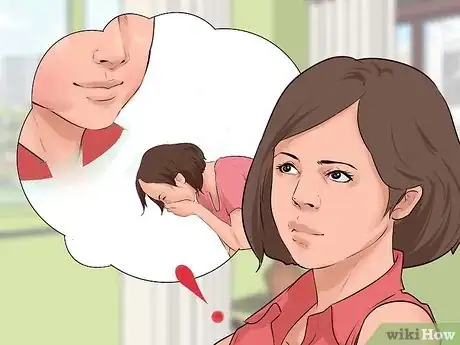



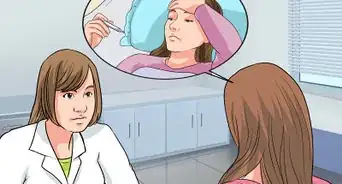


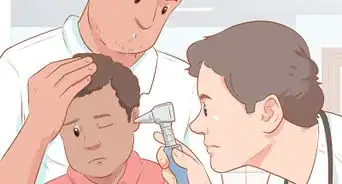

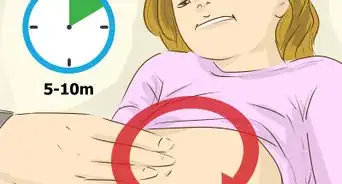




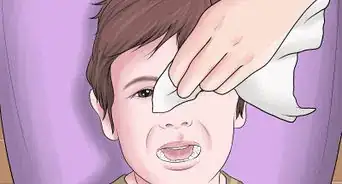
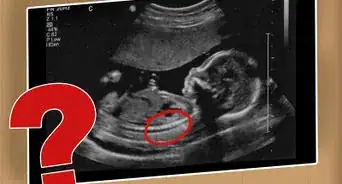












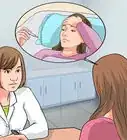




































Medical Disclaimer
The content of this article is not intended to be a substitute for professional medical advice, examination, diagnosis, or treatment. You should always contact your doctor or other qualified healthcare professional before starting, changing, or stopping any kind of health treatment.
Read More...